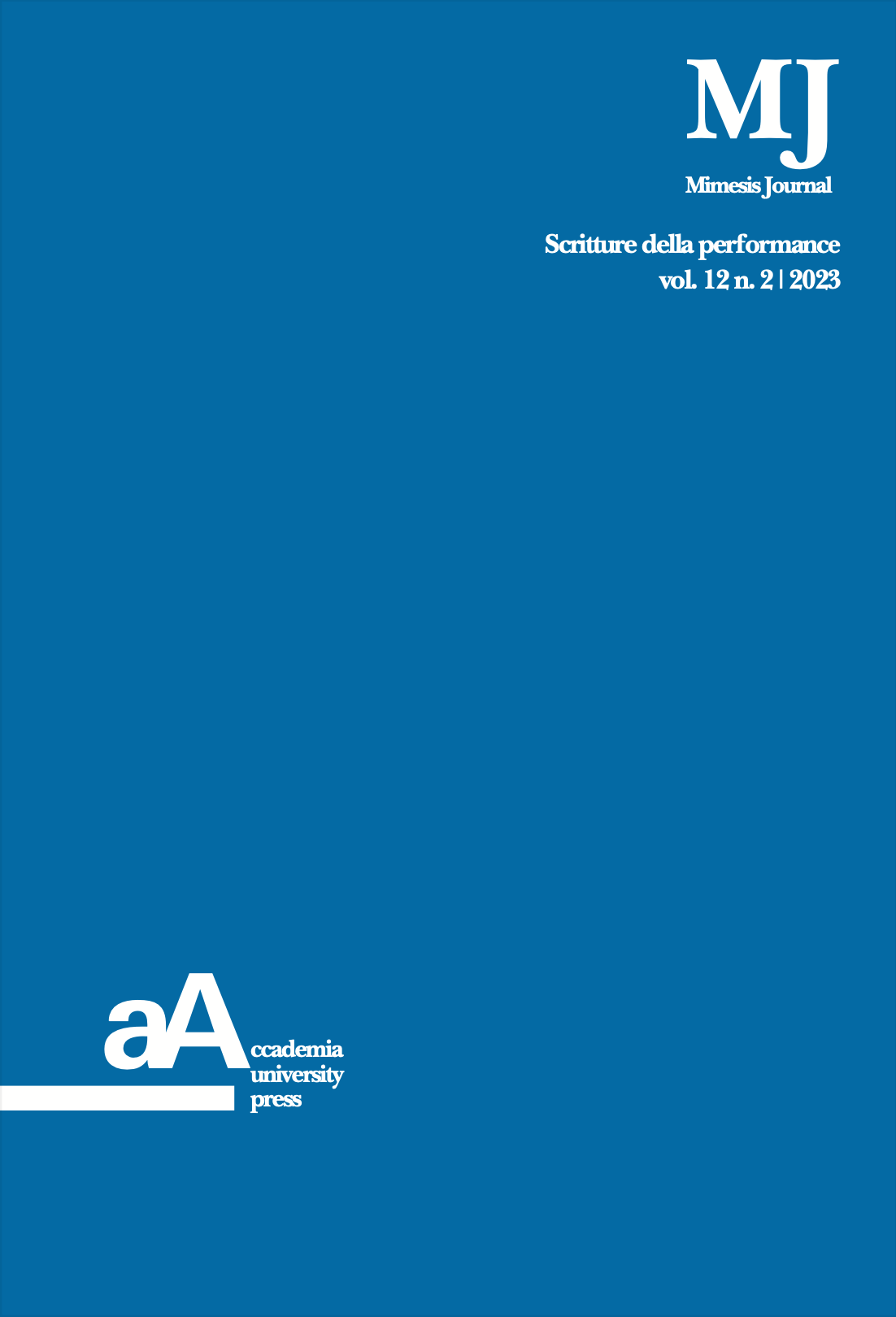Danzare il paesaggio: pratiche ecologiche tra coreografia e territorio
DOI:
https://doi.org/10.4000/mimesis.2840Parole chiave:
biopolitics, corporeality, choreography, dance studies, aestheticsAbstract
L’articolo indaga le modalità di relazione tra danza e paesaggio costituendo una prospettiva interdisciplinare che integri discipline paesaggistiche, scienze della sostenibilità, con performance studies e discipline della danza. Applicando questa lente si intende inserire alcuni significativi fenomeni e processualità che la danza ha intrapreso, già nel secolo scorso, in relazione con gli ambienti naturali. Dai ‘pionieri’ della modern dance Isadora Duncan e Rudolf Laban fino alla ricerca del secondo Novecento di Anna Halprin, il movimento del corpo si è confrontato in vario modo con gli spazi naturali, agendo insieme al paesaggio e non semplicemente occupandolo. Negli anni Novanta lo sviluppo di una ricerca ecologica all’interno delle arti performative ha ulteriormente confermato quest’indagine attraverso l’ecoperformance (Maura Baiocchi) e l’ecodanza, mettendo in evidenza come il lavoro artistico potesse costituirsi integrando gli elementi naturali rinnegando, però, la centralità del corpo. Una dinamica che avrà un’influenza notevole nelle generazioni successive. Si guarderà, a proposito, il terzo paesaggio della danza in Italia, come lo definisce Acca, dove alcune realtà indagano le possibilità di abitazione dello spazio naturale e pubblico attraverso la danza come dom- e Fabrizio Favale. Per meglio definire quest’ultimo ci si focalizzerà sulla processualità di due lavori costituiti all’interno del progetto Bodyscape di Danza Urbana (2022): Sull’irrequietezza del divenire di Elisa Sbaragli, Edoardo Sansonne e Fabio Brusadin e La möa. Danza per corpo e torrente di Lorenzo Morandini. Entrambi questi progetti si realizzano in spazi pubblici e integrano una forte relazione con il paesaggio inteso come elemento culturale e naturale.


